Following on from last week, today I walk you through the second half of my Hokkaido Landscape Photography Adventure, a new tour that I just completed with special guest David duChemin and a group of incredibly talented photographers.
We pick up the trail on January 11, 2015, when we drove back down the west coast of Hokkaido, the northern-most island of Japan, to photograph a small fishing harbour that I’d visited during my 2011 reconnaissance tour. For me, the highlight of this little harbour was a corner that had seven old scrapped boats in the snow. This was basically a fishing boat graveyard (below).
This was a two minute exposure, again using both an ND8 and an ND400 for a hair under 12 stops of neutral density, enabling me to do long exposures in the middle of the day. I love this technique and found that it worked really well with the big heavy sky, with some patches of sunlight breaking through the clouds, especially along the horizon in the distance. If you click on this to view it large, you can probably also make out the Rishiri Island on the horizon in the far right of this photograph.
In the next photograph of the same group of fishing boats, I decided to remove the neutral density filters and record the heavy dynamic sky as it was, again with the sun breaking through the clouds in the distance a little. This was a 1/400 of a second exposure, as I didn’t want to blow out or over-expose the sky around the sun as it broke through the clouds. If you are careful to protect your highlights, there is still a lot of detail in the shadow areas to bring out in post or in a black and white conversion like this one, which I did as with most of the set, in Silver Efex Pro 2.
When comparing these two images, I feel as though the boat graveyard feeling is much stronger in this second image. The first one from above shows the same boats, but the angle doesn’t emphasise the fact that they are almost buried in the snow. From this angle the metaphor of them being buried is much stronger, and feels sadder in many ways. That’s also backed up of course by that heavy looming sky.
Along the coast, the fishing boats play an important part in this tour, and on the following day, we drove around to the small harbours along Cape Souya, the northern-most tip of Japan. This image (below) is from the first one that we stopped at as we made our way around the coast on January 12.
Here I used a 14mm lens and got in close to emphasise the bow of the boat. I was also conscious here of details like the ladder in the snow under the boat, and I purposefully lined up the bows of the rest of the boats to trail off into the distance. Again here, I shot with with a normal shutter speed. This was 1/50 of a second with an aperture of f/14, ISO 100.
A little further around the coast, and we came to the same harbour where I photographed a line of fishing boats back in 2011, very similar to this next image (below). We’re back to a two minute exposure here again, and this time the cloud movement did what I love, as it moved towards the scene, and the wide angle lens, again 14mm, really helps to emphasise the flowing, radiating effect of the movement. Here I was also really excited by the way the snow looks like the sea. As David duChemin got back on the bus at the end of the shoot I showed him this on my camera saying that it looks like the boats are sailing on a sea of snow. David laughed and said that he’s just said the same thing to someone else too.
When I was here before searching for these locations, I was always quite conscious about going into these fishing harbours, but for this trip, we contacted most of the locations ahead of time, which made it much easier to do our thing. You wouldn’t know it from the photos, but some of these ports were actually quite busy doing things that can only be done in the winter time, while the fishing boats are up on the land like this.
After these fishing port stops through the morning, we started to drive down the eastern coast of Hokkaido, towards a small fishing village called Ohmu, which would be our home for another two nights. With Ohmu as our base, we took a drive inland to look for some more minimalist landscape, such as this one, which is just a fence in the snow (below).
I really enjoy this kind of photography, especially in a print, when you can see the subtle detail in the snow, and in this particular shot, there’s a stick poking out of the snow at the bottom right, which for some reason I really like. I can imagine some people cloning that out, but for me, these things are like easter-eggs. Easter-eggs in software terms are what developers used to hide in applications, such as an entire 3D world in Microsoft Excel years ago, that could only be accessed if you knew a secret series of keystrokes. You don’t hear about these so much these days, but finding a little detail in a photograph like this feel similar to that.
On the afternoon of the 13th, we made time for a workshop session at the hotel, and I walked the group through an hour on Silver Efex Pro and Color Efex Pro, and David followed up with a talk about composition. Quite often by this point in a workshop like this the group is happy for a bit of downtime, and if you can use it productively like this, it’s always nice. That’s why I carry a projector with me on most of these workshops, and the hotel that we stayed at had a really nice conference room with a screen that we were able to use.
The following morning, after breakfast we checked out and were due to start our drive to the next and final location, but as we got on the bus the sun was bursting through the clouds forming beautiful rays, so instead of starting our drive, we drove just a couple of minutes back down to the port at Ohmu, and had an hour photographing these rays with the beautiful port in the foreground, and of course, there were Tetrapods.
Here (above) I lined up the tetrapods so that they formed a kind of leading line, from the bottom left and closest tetrapod block, leading our eye into the scene and around to the wall of the harbour and rays of sunlight. To capture the movement in the sea I went for a four second exposure this time. That’s long enough to capture a wave or two, and leave some texture in the water, but not so long that the rays of sunlight start to merge together. If you go too long with things like the suns rays, they weaken as they merge together.
You can still see the rays a little bit in this next longer 60 second exposure (below), but they are not as well defined as those in the previous photograph. Here though, I’d recomposed, and was using the rocks in the foreground to now anchor the image and I really wanted to capture the water more smoothly now, so hence the longer exposure.
This is a foreground that I feel was worth including too. Quite often these days I see people with foregrounds that don’t actually add much to the image, if anything. It’s as though people are taking the advice of putting something in the foreground too literally.
Rules in photography are only ever guidelines, to give us ideas on how to compose images, but when taken too literally can stifle our creativity. I really only like to add foregrounds like this when I feel they add something to the scene. I know it goes against recent trends, but every images does not have to have a strong foreground, although it is nice when they can have one, and I believe this is one of those occasions.
Later in the day, we arrived in the Saroma Lake area. The Saroma Lake is a body of brackish water separated from the sea with a thin slither of land in the most part, but with a thin inlet through which the salt water of the sea flows into the lake. It’s the third largest lake in Japan, and the largest in Hokkaido, and is dotted with multiple fishing ports, one of which we spent a number of hours photographing the fishing boats, as in this photography (below).
For this photo I got in relatively close to the first boat, cropping it off in the top right, then included the bows of the other boats, but the attraction to this scene for me was the stark shadows cast by the boats. I also take it for granted having lived in Japan for most of the last 24 years now, but the I imagine the Japanese writing on these boats does give them a different feel to a similar scene in many other countries.
As I narrowed down my selection of images to show you in these two episodes, I was conscious to try and give you a good spread of subjects and scenes, but I couldn’t resist also including this other boats and shadow shot (below), which was literally just a few minutes later looking in the opposite direction to the last shot. For me, I actually found it interesting that the owner of the Ko Yu Maru boat decided to add the name in roman characters, which I’ve never seen before on a fishing boat.
Again though, it was the shadows and here the flowing form of the drift-snow, almost looking like the waves on the sea that attracted me to this scene. The prevailing winds that blow between the boats as it snows are obviously responsible for this, and I imagine it happens a lot, but I just found these shapes very pleasing. We were careful of course as a group not to destroy these patterns until everyone had gotten their own shots, and when possible, tried to just leave them as pristine as possible when leaving.
Later in the day, we drove along the northern side of the strip of land separating the Saroma Lake from the sea, and found a way down the bank to the edge of the lake with this beautiful old tree (below) and again, the sun was breaking through the clouds causing beautiful rays. I have some wider images with the entire tree in too, but quite like this tightly cropped image, with all the grasses and plants in the snow playing a larger part in the scene.
You wouldn’t know it from the photo, but at this point there were about six of us all just sitting around the snow, making jokes as we worked the scene. I love this camaraderie when traveling with my groups, although a lot of what is said can often not be repeated in public.
The following day we headed inland again, looking for some minimalist scene and at one point we rounded a corner and were presented with this scene (below). This is a 1:2 aspect ratio crop of a single frame, but I also used a longer lens flipped into portrait orientation and shot a series of images for a wider stitched panorama, which I can’t wait to print really large, and maybe do a gallery wrap of. This scene was simply beautiful, and with the frost on all of the trees and the pristine snow in the foreground, it felt like a glade of heaven really.
Later in the day, David noticed a small copse of trees on top of a hill as we drove around, and although I got a shot of that copse that I really like, using my last image of the 12 for this episode, here is the last image of the set. This is the line of trees just beneath the one that David had seen (below). Again, I just like the simplicity of this kind of scene, with the trees complimented by the fence, and vice versa.
One thing to note here is that because this scene was quite far off, I borrowed a new Canon 100-400mm Mark II lens from one of the participants, and compared to my 70-200mm with the 1.4X Extender on it, the new 100-400mm is incredibly sharp. I’ve even heard that it’s sharper than the 70-200mm without an Extender, which is hard to believe, but I’m thinking that this statement is probably true. I’ll be taking my 100-400mm Mark II on my next two Hokkaido wildlife tours starting tomorrow, and I’ll be sure to follow up and let you know how this lens performs, in addition to my updated findings on the 7D Mark II, when these tours are finished.
Anyway, that takes us to the end of this two part update on my first landscape only Hokkaido tour. I hope you’ve enjoyed following our footsteps. I actually slipped up on the final morning. If you’ve followed this podcast for long and have listened to previous tour updates, you’ll know that I usually finish with a recording of comments from the group. On this tour though, I continued to look for opportunities until we literally pulled into the airport car park on the last day, and it totally slipped my mind, so I have nothing to play you, so sorry about that.
Note too that I have now started taking bookings for the 2016 Hokkaido Landscape Tour, which you can find at https://mbp.ac/hlpa including buttons to pay your deposit and make your reservation if you’d like to join us for another wonderful adventure. I should also mention that our two Japan Snow Monkeys & Hokkaido Tours for 2016 are filling very fast, so if you’d like to join us, check your schedule and visit https://mbp.ac/ww2016 to book your place before these tours sell out.
Show Notes
2016 Hokkaido Landscape Photography Adventure: https://mbp.ac/hlpa
Martin on Instagram: http://instagram.com/martinbaileyphotography
Subscribe in iTunes for Enhanced Podcasts delivered automatically to your computer.
Download this Podcast in MP3 format (Audio Only).
Download this Podcast in Enhanced Podcast M4A format. This requires Apple iTunes or Quicktime to view/listen.


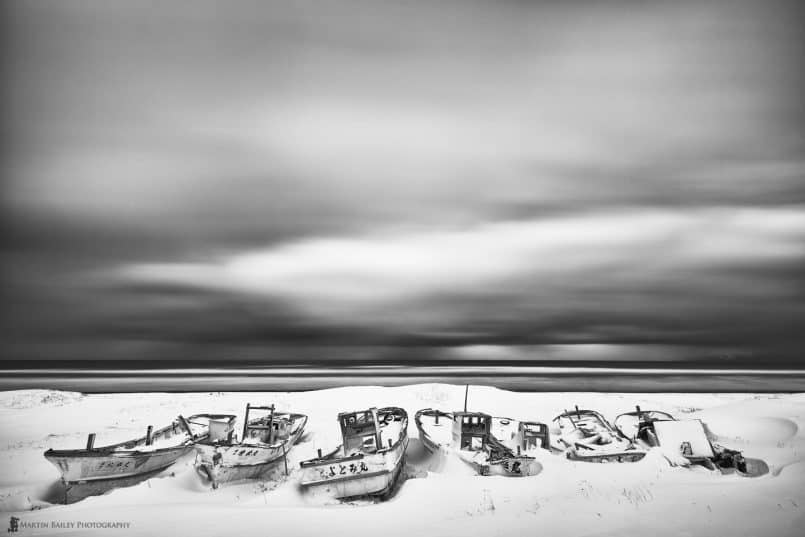
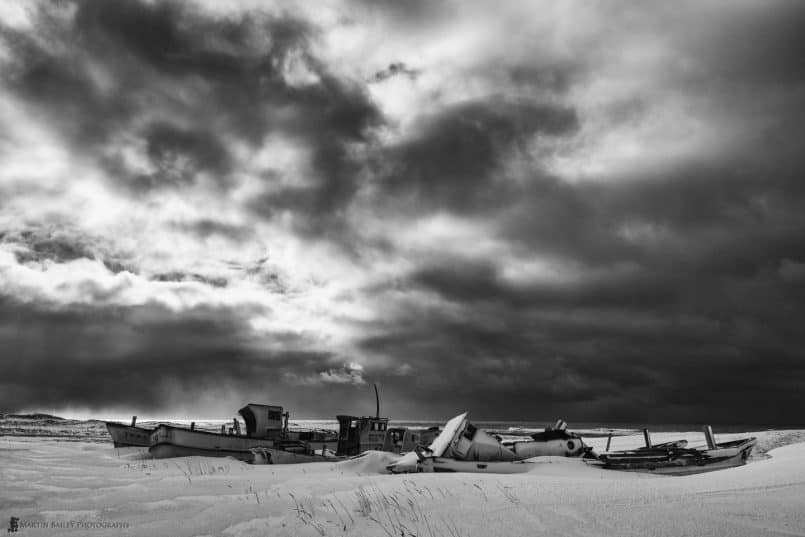

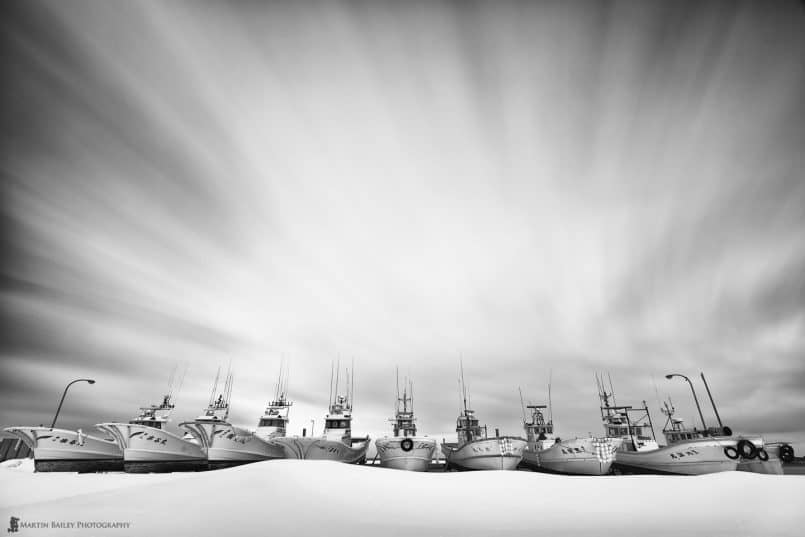
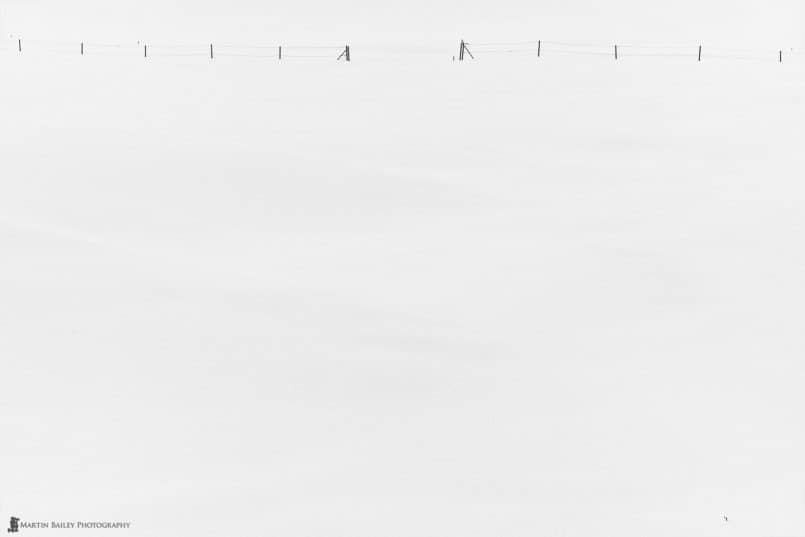



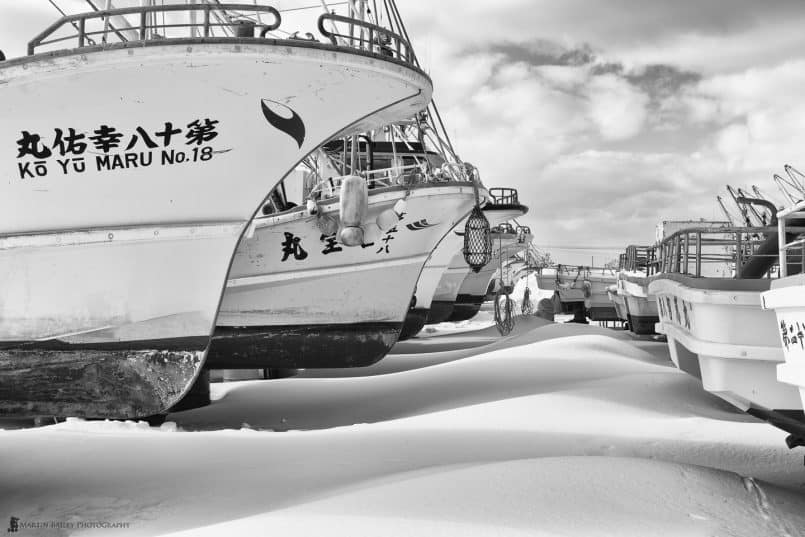
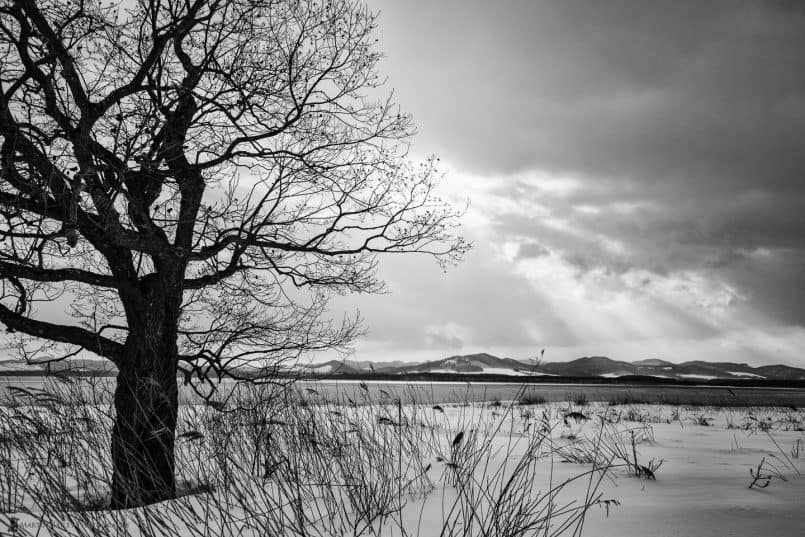
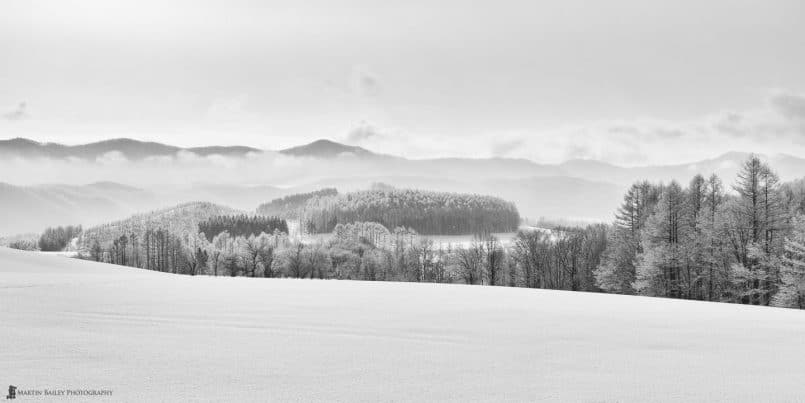
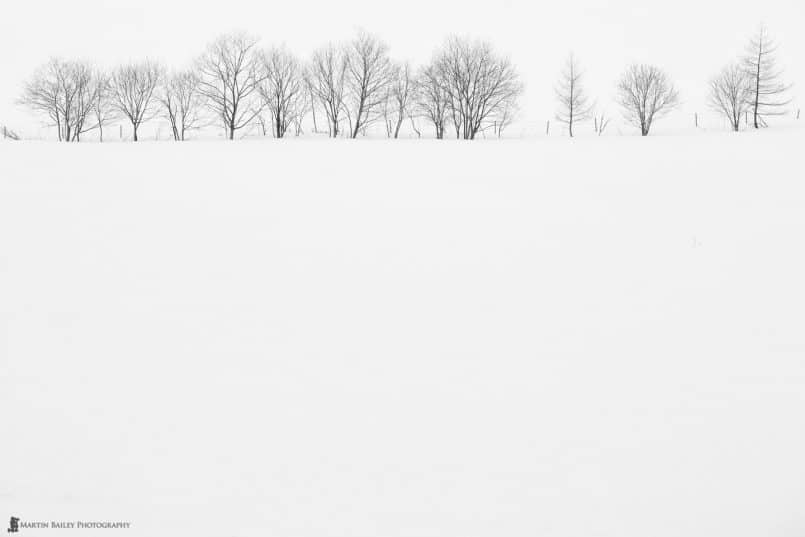


Which is also great.
Thank you Satoshi!
Very Nice landscapes. so inspiring!
Thanks Otis! I’m pleased you enjoyed these. Thanks for stopping by!
Wow, these are just stunning, love the tones…
Thanks Allister!
I have not seen a nicer than yours sky in a photo for ages!